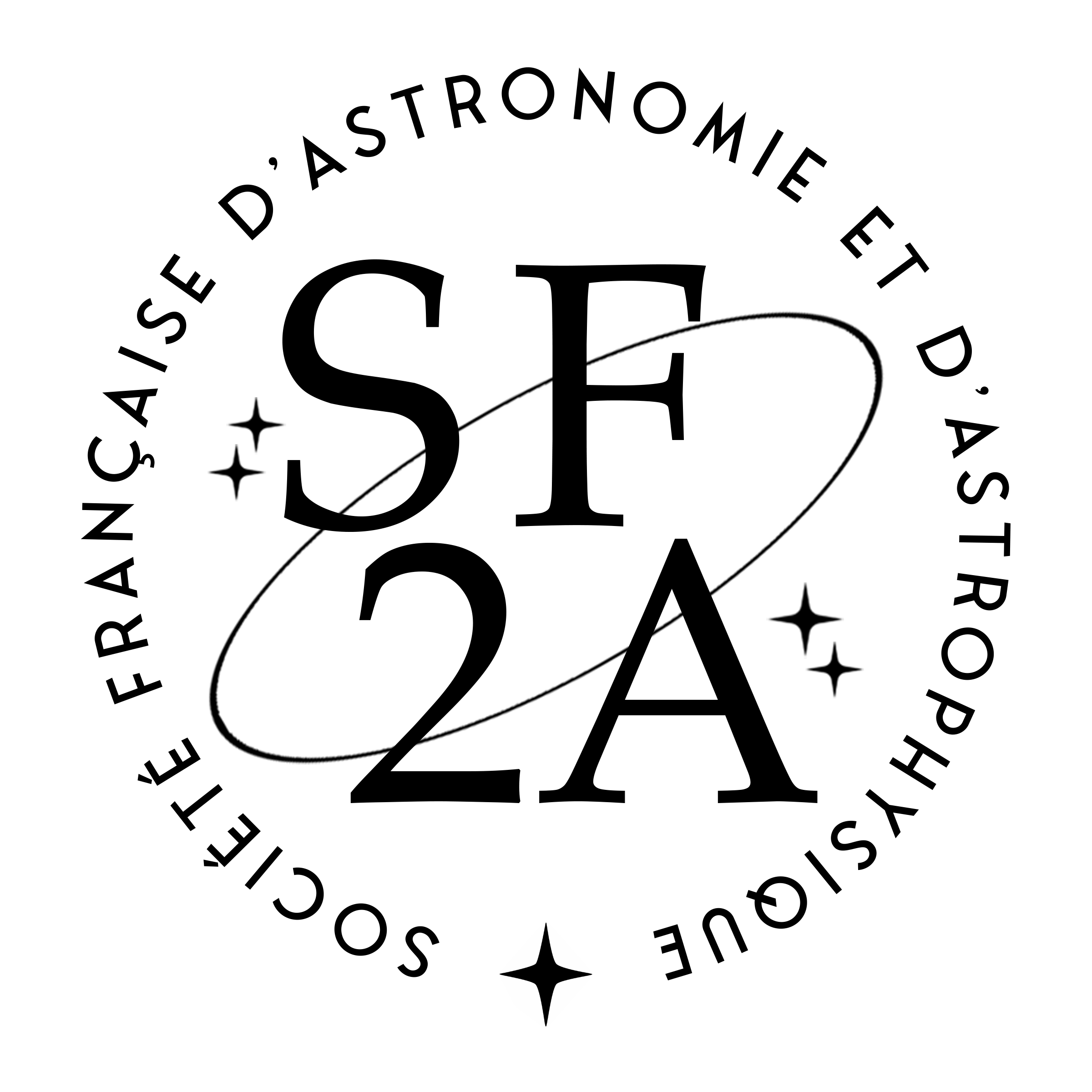Message SF2A No 1147 – 28/07/25
- Call for nominations for EAS Prizes and the new EAS Fellows
- Call for sessions at the EAS Annual Meeting 2026
- Call for Letters of Intent to host the future EAS Annual Meetings
- En mémoire de Patrick Gaulme
1. Call for nominations for EAS Prizes and the new EAS Fellows
The call for nominations for EAS Prizes and the new EAS Fellows is now open.
EAS members are invited to submit nominations for Prizes awarded in 2026 by the EAS, ie, the MERAC Prizes
for Best Doctoral Thesis, Tycho Brahe Medal, and Fritz Zwicky Prize, by October 31. More details:
https://eas.unige.ch/merac_prizes.jsp
https://eas.unige.ch/tycho_brahe_medal.jsp
https://eas.unige.ch/zwicky_prize.jsp
In addition, the nominations are invited for the new EAS Fellows programme by the same deadline, October 31:
https://eas.unige.ch/fellows.jsp
Transmis par Marc Audard
2. Call for sessions at the EAS Annual Meeting 2026
The call for sessions at the EAS Annual Meeting 2026 next year in Lausanne, Switzerland is out:
https://eas.unige.ch/EAS_meeting/call.jsp
Please consider submitting a proposal by Sep 30, 2025. Feel free to forward this e-mail to your colleagues.
Transmis par Marc Audard
3. Call for Letters of Intent to host the future EAS Annual Meetings
We announce the opportunity to bid as hosts of the future EAS Annual Meetings. Currently, two bids for the 2027 meeting are under consideration and have no candidate hosts yet for the meetings in 2028 and 2029. We kindly ask interested parties to send a 1-page Letter of Intent to eas@unige.ch by September 30, 2025. A full bid application will be expected by the end of 2025.
The EAS Annual Meeting is held every year in a different European country. Its main goal is to promote European astronomy, to facilitate scientific exchange and to motivate new collaborations at an international level, and to help students and early career researchers develop their collaboration networks. The diversity of venues recognises the national diversity within Europe. It allows the involvement of national societies in the organisation and to strengthen the link between them and the EAS. To ensure each year a conference of equally high standard the EAS takes a leading role in the organisation of the EAS Annual Meeting with the support of a professional conference organiser.
The EAS Annual Meeting has evolved into the largest astronomical meeting in Europe, with a list of participants exceeding 1500 people in recent years, from all over Europe and beyond. Since a few years, a significant fraction of the sessions at the EAS Annual Meeting is accessible online; the hybrid aspect should be an integral part of the meeting.
Transmis par Marc Audard
4. En mémoire de Patrick Gaulme
Patrick Gaulme s’est éteint le 14 juillet après avoir combattu un cancer durant cette dernière année après de nombreuses épreuves.
Après un DEA « astrophysique et instrumentation associées » au cours duquel des amitiés profondes ont été nouées avec ses camarades, Patrick a obtenu sa thèse en 2005 avec Benoît Mosser au LESIA à l’Observatoire de Paris. Il a ensuite effectué un post-doctorat d’un an à l’Observatoire de la Côte d’Azur de Nice, un ATER à l’Observatoire de Paris, un post-doctorat de 3 ans à l’Institut d’Astrophysique Spatiale d’Orsay, puis a travaillé 6 ans aux États-Unis à l’Université du Nouveau Mexique de Las Cruces, avant de revenir en Europe, à l’Institut Max Planck pour la Recherche sur le Système Solaire de Göttingen pendant 6 ans en tant que « non-tenured scientist ». L’ironie du sort aura voulu qu’il obtienne un poste tenure-track à l’observatoire de Tautenburg (Thüringer Landessternwarteen) en juin 2023, un an avant de contracter sa maladie.
Astrophysicien né en 1978, Patrick a dédié sa thèse à la sismologie jovienne et à la modélisation de l’impact des nuages de Jupiter sur le signal sismique dans le cadre du programme JOVIS du CNES. Suite à l’évolution du programme micro-satellite Myriade l’orientant vers l’observation spectrométrique au sol, Patrick joue un rôle clé dans le projet SYMPA lors de son post-doctorat à Nice, où il parvient à détecter la signature des ondes acoustiques sur Jupiter. Il participe aussi aux travaux sur les vents vénusiens à Meudon, puis s’investit à l’IAS dans la recherche d’ondes acoustiques dans les étoiles solaires avec les données CoRoT, tout en initiant un projet d’instrument spatial pour la mission JUICE, premier pas vers l’instrument JOVIAL.
Installé aux États-Unis en 2011, il pilote l’observatoire au sol JIVE-JOVIAL pour observer les oscillations joviennes et publie des résultats originaux sur les oscillations solaires dans la lumière réfléchie par Neptune avec le satellite Kepler, avant de rejoindre l’Institut Max Planck à Göttingen en 2017 pour diriger un groupe de traitement des données PLATO. En 2023, à la Thüringer Landessternwarte (TLS), il combine études en astérosismologie de divers types d’étoiles, observations de planètes géantes et projets innovants, tout en préparant des mesures des oscillations de Saturne.
Enthousiaste du ciel et des sous-sols parisiens, emballé par le rythme des étoiles et les mélodies des guitares, chercheur et artiste, ami sincère, amoureux de l’Italie, père admirable et mari dévoué, Patrick laisse un vide immense à tous ceux qui l’ont connu intimement. Toutes nos pensées vont à sa famille, ses parents, sa femme et ses 4 enfants.
Voir le texte complet ici:
https://sdrive.cnrs.fr/s/d8rqZgyQKk2AW3m
Transmis par Vianney Lebouteiller et Thierry Appourchaux
Pour faire passer vos messages, envoyez un mail au secrétariat SF2A (secretariat@sf2a.eu) avant le vendredi 18h pour une diffusion le lundi après-midi suivant.
Pour se désabonner de la newsletter, rendez-vous dans votre espace MaSF2A (www.ma.sf2a.eu)>Annuaire>Gérer votre fiche.

Comments are closed